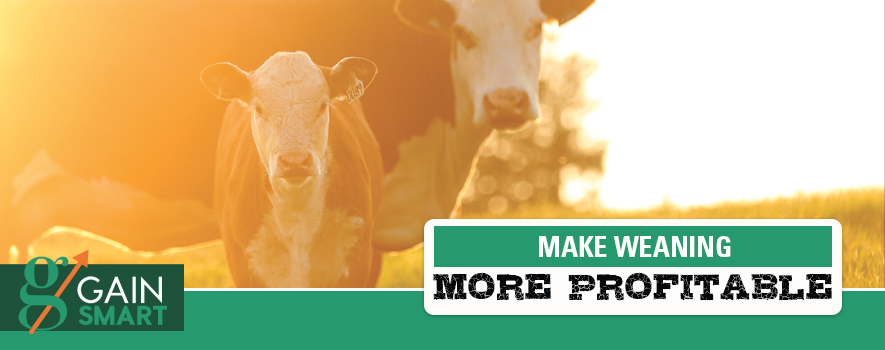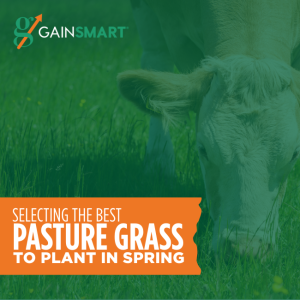
In a time of unpredictability in the cattle market, one thing remains predictable. The fewer days you have a calf on feed, the lower your input costs will be. With a great percentage of cow-country covered by drought, higher feed costs and a volatile market, finding profit in the cattle business is on top of mind for all producers.
One way to help mitigate the feed costs for your herd is to explore the option of early weaning, simply defined as weaning earlier than you might in a typical year. Some producers will wean their calves at 60-90 days of age, often a huge benefit to the cow if she is no longer lactating. It’s not uncommon to wean at 120 days, still earlier than the traditional weaning age. However, it is important to weigh out both the advantages and disadvantages of early weaning for the cow and her offspring before making that decision.
“It is cheaper to feed a calf than it is to feed a cow to feed a calf,” said Dan Shike, University of Illinois Associate Professor of Animal Science, “But, will it pay?”
Some of the key advantages of early weaned calves include better quality grades and more higher graded Choice carcasses. Early weaned calves also tend to post higher average daily gains than those calves traditionally weaned that are on creep feed or only grazing pasture. Advantages for the cows include a better body condition score (BCS) at their next gestation and calving and decreased forage intake.
Disadvantages of early weaning include increased management, the need for tighter facilities and lowered water and feed sources, increased labor for monitoring calves’ health, and initial increased feed costs for the calves.
Regardless of if you early wean or traditional wean, you can jump start your calves’ nutritional needs with the Gain Smart® program from BioZyme®. The three-step program starts with Vita Charge® Cattle Drench, a drench that supports digestive health and promotes feed and water intake during times of stress and recovery. Designed to be administered within the first 48 hours of weaning or shipping, the Cattle Drench is conveniently designed for processing large groups of cattle.
Step two includes the Vita Charge Stress Tub or Vita Charge Stress Tub HEAT®, recommended for the calves for the first two weeks post-weaning. Both the Vita Charge Cattle Drench and the Stress Tubs include Amaferm®, a precision-based prebiotic designed to enhance digestibility by amplifying nutrient supply for maximum performance. It is research-proven to combat stress and maintain performance by supporting the animal’s own immune system, significantly increasing intake and nutrient utilization. The Stress Tubs HEAT also contains capsaicin to support animal performance and gain in heat stress situations.
The third and final step of the Gain Smart Program is feeding one of the four Gain Smart® mineral formulas to your calves to achieve healthy, efficient gain. The Gain Smart mineral is powered by the Amaferm advantage, research-proven to promote stimulate digestion and nutrient absorption of forage for optimum gain.
Post-weaning Marketing Strategies
Once your calves are weaned, you want to maximize their profit potential. Ron Gill, Associate Department Head and Extension Program Leader for Animal Science with Texas A&M AgriLife Service, offered several pieces of advice to producers looking to get the most profit at sale time, during the recent Cattle Industry Convention.
Producers have several opportunities to add value to their calves at sale time; however, they need to take the next step and market the value that they add. They can do that through several venues. They can enroll in a value-added program, coordinate with their local auction market to seek help promoting their calves, but most simply produce what the buyer is looking for.
“Are we marketing what we do? Adding value is one thing, but are we marketing that value,” Gill challenged producers.
He suggests three strategies to increase profits at sale time.
Produce What is in Demand
Gill said producers should focus on what the market is dictating. For example, in many areas, beef on dairy has created some high-quality feeder cattle. The more beef on dairy steers you can sell, the more dollars you will bring in. If this scenario meets your management and marketing plan, this is one consideration.
If your production scheme and marketing plan is more dictated by replacement females, consider the types of females that your buyers are looking for. They likely desire highly maternal, structurally sound females that will wean off a big calf. However, Gill said producers shouldn’t forget to look the number one criteria that buyers look at when buying replacement females, and that is docility.
“If you can show them off easily, and the cattle are curious, they are typically easy to market,” Gill said.
Market through a Value-added Program
If you raise quality cattle, provide them with good nutrition and health protocols and know anything about their genetic make-up, there is likely at least one value-added program for you to receive premiums on for your calves. Verifying the source, age, genetics, health and nutrition practices are all ways to add value, and where there is value, there is usually added dollars.
Most value-added programs are recognized at sale time either by a tag, an emblem or shield. Special sales might be held for groups of calves that meet specific program requirements, or individual buyers might seek out cattle enrolled in certain value-added programs endorsed by specific companies or associations.
“The market is being set from value-added calves. The more verification you have, the more premiums you will receive,” Gill said.
BioZyme® offers two nutritional value-added opportunities to market calves through Superior Livestock. The Gain Smart Program recognizes stocker calves that have been fed the Gain Smart Mineral program outlined above for a set number of days prior to sale through delivery. The VitaFerm® Raised Program pays premiums on calves who have been raised by cows fed the VitaFerm minerals for 45 days prior to sale through delivery or calves that have been fed the VitaFerm minerals for the same time period. Buyers recognize that good nutrition found through the Amaferm in these minerals is tied to increased health and increased gains, ultimately leading to increased performance.
Practice Good Stockmanship
Good stockmanship and handling practices are likely part of your everyday operation. But did you know they can also help you increase your bottom line? Gill said things like proper cattle handling, identification, weaning and vaccination are all ways to see more return on your investment.
“Use stockmanship to improve psychological wellbeing of your herd,” he encourages.
For example, he said producers will lose profit by selling calves directly from the cow, because the shrink (the amount of weight lost from weaning to market) is lost, and not managed correctly. Roughly 10-12% shrink will be lost; however, if those calves are weaned and straightened out before weaning the shrink will be minimized and the amount of profit lost will be less.
Vaccinations and identification are other considerations. Often, these two happen at the same time and for good reason. It allows for one time of calf handling, which lessens the stress on the calf. And, once the calf is tagged, the buyer assumes it is vaccinated, which typically adds 2-3 cents per pound to the price, according to Gill. He adds that many times producers spend too much on over-vaccinating, and calves only need two rounds of vaccines.
Following thoughtful, responsible cattle management like that outlined in BQA principles is a good way to keep your cattle safe and performing to their optimum potential to get the most profit post-weaning.
In a time of uncertainty, one thing is still certain: pounds pay. Make sure to keep your calves healthy, gaining and performing to the best of their ability to get the most pounds at weaning to capture the most profit on sale day. Keep them healthy and gaining with Amaferm. Keep them on your program with our program.

